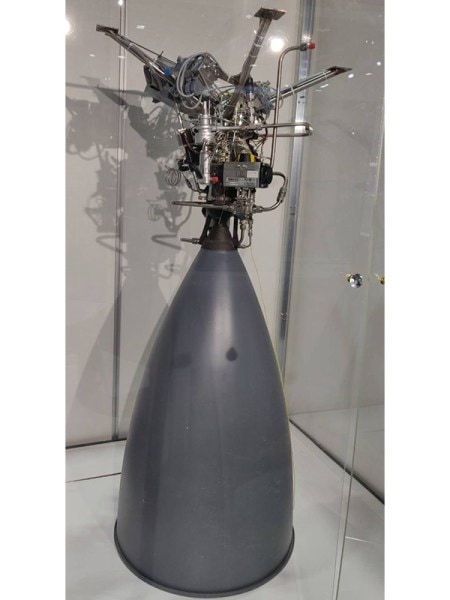Earlier this month, Chennai-based space-tech startup Agnikul Cosmos successfully completed the test firing of Agnikul—the company’s 3D-printed rocket engine—at the Vikram Sarabhai Space Center in Thiruvananthapuram. Agnilet claims to be the world’s first single-piece 3D-printed rocket engine.
The Agnilet rocket engine is designed to be used in Agnibaan—a small satellite launch vehicle that can carry payloads of up to 300 kilograms to a low-Earth orbit—which the company is currently developing. The Agnilet rocket engine is a “semi-cryogenic” engine. It uses a mixture of liquid kerosene at room temperature and supercold liquid oxygen to propel itself.
Srinath Ravichandran, co-founder and CEO of Agnikul, explained to indianexpress.com that “3D printing is a sweet spot for launch vehicles,” emphasizing how it can be used to manufacture multiple iterations of complex and customized designs, speeding up the research and development process.
 The Agnilet rocket developed by Agnikul is pictured here. (Image credit: Agnikul)
The Agnilet rocket developed by Agnikul is pictured here. (Image credit: Agnikul)
“When you use older manufacturing techniques, there is a lot more complex hardware and manpower involved. With 3D printing, you can make hardware almost as fast as you can make software. This is why we were able to make hundreds of iterations of the design so that we could finally reach a stage where we can 3D print an entire engine in one shot,” said Ravichandran over a video interaction.
But 3D printing is not without its disadvantages. While it does allow engineers to reiterate designs faster than with conventional manufacturing techniques, it is not as scalable. With conventional techniques, once a design has been set, multiple copies can be manufactured much faster.
“3D printing is still slow if you compare it to injection molding or planar-based manufacturing where you can manufacture millions of pieces every month. So it is not meant for manufacturing in large volumes. But rocket engines and a lot of the components of launch vehicles can be manufactured using this method,” explained Ravichandran.
However, Agnikul sees the successful test-firing of the Agnilet engine as a validation for using the technology for space-based applications. “The engine is very complex and it functions at very high temperatures. So if we can 3D print an engine successfully, that makes us very confident about manufacturing simpler, static parts for the rest of the launch vehicle,” he added.
But for an actual space launch, it is not just the engine that needs validation. Other systems, including avionics packages and guidance and navigation systems, also need to be tested and validated. Agnikul is working on validating the entire launch vehicle and is hoping to have a test launch by the end of the year. During the test launch, the Agniban rocket will be carrying payloads that are designed to test its systems.
.